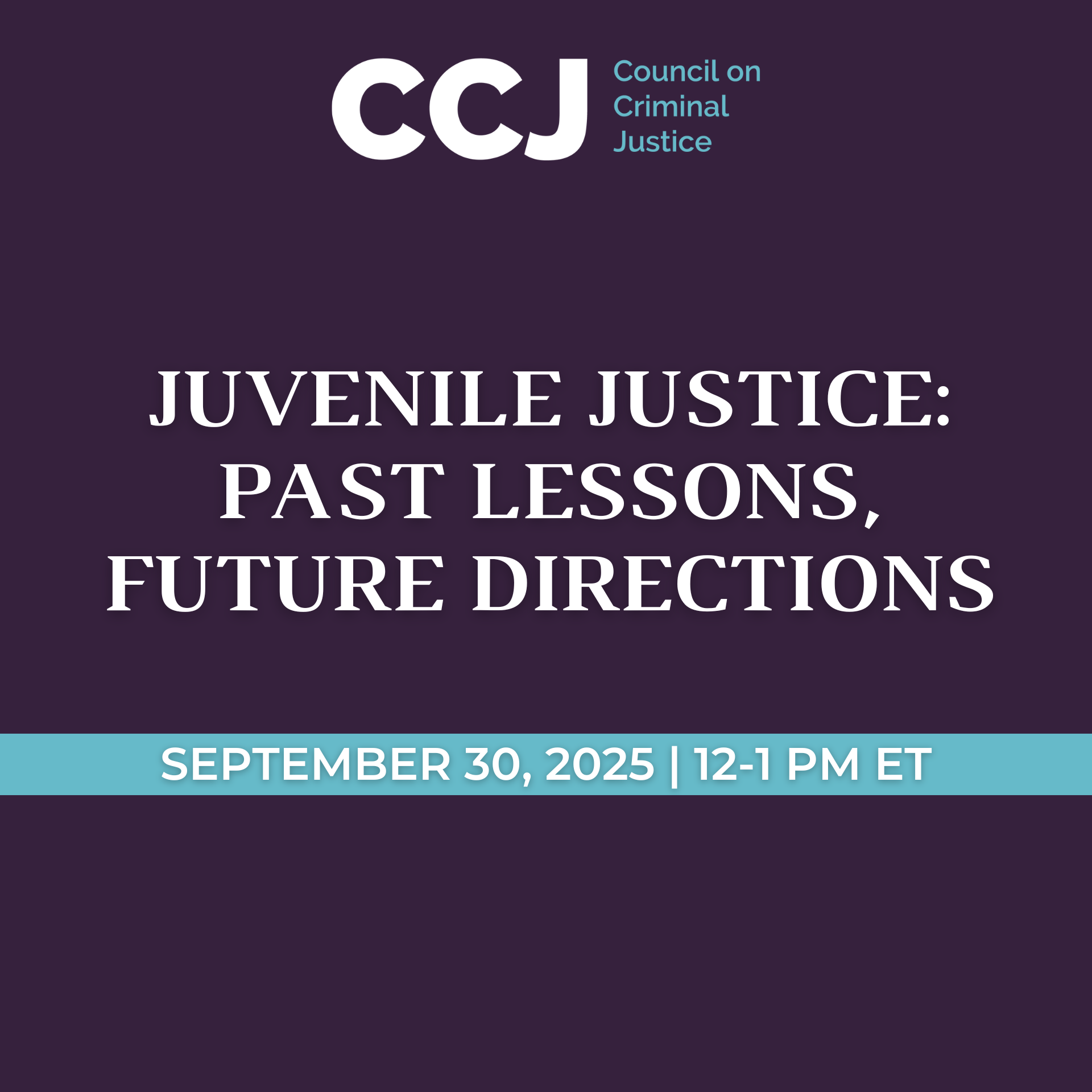Based on a year-long analysis, recommendations outline steps to focus resources on violence prevention and victim restoration
EMBARGOED FOR RELEASE
5:00 a.m. ET, March 21, 2023
Contact: Jenifer Warren
jwarren@counciloncj.org
WASHINGTON, D.C. – As cities across the nation grapple with effective responses to increases in violent crime, a task force co-chaired by former U.S. Deputy Attorney General Sally Yates and former U.S. Rep. Trey Gowdy today released a report outlining a comprehensive approach for the use of lengthy prison sentences in the United States.
The report, How Long is Long Enough?, presents 14 recommendations to enhance judicial discretion in sentencing, promote individual and system accountability, reduce racial and ethnic disparities, better serve victims of crime, and increase public safety. Defining long sentences as prison terms of 10 years or longer, the panel’s proposals include:
- Shifting savings from reductions in the use of long prison sentences to programs that prevent violence and address the trauma it causes individuals, families, and communities (Recommendation 1).
- Allowing judges to consider all relevant facts and circumstances when imposing a long sentence, and requiring that sentencing enhancements based on criminal history are driven by individualized assessments of risk and other factors (Recommendations 6 and 8)
- Providing selective “second look” sentence review opportunities and expanding access to sentence-reduction credits (Recommendations 11 and 12)
- Focusing penalties in drug cases on a person’s role in a trafficking organization, rather than the amount of drug involved, (Recommendation 7)
- Reducing recidivism by providing behavioral health services and other rehabilitative living conditions and opportunities in prison (Recommendations 3 and 13)
- Strengthening services for all crime victims and survivors by enforcing victims’ rights, removing barriers to services, and creating restorative justice opportunities (Recommendations 2, 4, and 9)
“Some may wonder, why would we even discuss the nation’s use of long prison sentences now, amid a rise in homicide rates and legitimate public concern about public safety? Because this is exactly the time to examine what will actually make our communities safer and our system more just,” Yates and Gowdy said in a joint statement accompanying the report. “When crime rates increase, so do calls for stiffer sentencing, often without regard to the effectiveness or fairness of those sentences. Criminal justice policy should be based on facts and evidence, not rhetoric and emotion, and we should be laser-focused on strategies that make the most effective use of our limited resources.”
The report is the product of a year-long analysis by the nonpartisan Council on Criminal Justice (CCJ) Task Force on Long Sentences, which includes 16 members representing a broad range of experience and perspectives, from crime victims and survivors to formerly incarcerated people, prosecutors, defense attorneys, law enforcement, courts, and corrections. The panel examined the effects of long sentences on the criminal justice system and the populations it serves, including victims as well as people in prison, their families, and correctional staff.
Drawing on sentencing data and research, including a series of reports prepared for the Task Force, the sweeping recommendations offer a comprehensive blueprint for action on a complex and polarizing topic. According to an updated analysis by CCJ, 63% of people in state prison in 2020 were serving a sentence of 10 or more years, up from 46% in 2005, a shift due largely to a decline in people serving shorter terms. During the same period, the gap between Black and White people receiving long terms widened, from half a percentage point to 4 percentage points. Though murder defendants were the most likely to receive a long sentence, drug offenses accounted for the largest share (20%) of those admitted to prison to serve 10 or more years.
“Our nation’s reliance on long sentences as a response to violence requires us to wrestle with highly challenging questions about the relationship between crime, punishment, and public safety,” Task Force Director John Maki said. “Through their painstaking deliberations, our members rose to the challenge and produced a set of recommendations that recognize our need to advance public safety while respecting the humanity of those most affected by long prison terms.”
To view the recommendations, as well as research briefs, meeting summaries, and additional perspectives shared by members, please visit the Task Force website. Participants on CCJ task forces are asked to join a consensus signifying that they endorse the general policy thrust and judgments reached by the group, though not necessarily every finding and recommendation.
Key Research Findings
To inform its deliberations, the Task Force commissioned and reviewed research on a wide range of topics, including:
- The public safety impact of shortening lengthy prison sentences. Based on first-of-their-kind calculations, this research estimated that reducing long terms in Illinois (the state providing the data) would result in a very small increase in arrests of any kind, and almost none for violent or weapons offenses.
- The impacts of long sentences on public safety. Summarizing the existing research on deterrence and incapacitation, the analysis finds that there are crime-reducing effects but that they are limited and vary by offense.
- International comparisons. Researchers conducted original calculations to show that the U.S. remains a global outlier in its use of long prison sentences, even after accounting for the much higher homicide rate in the U.S., compared to Europe, and for actual prison time served (vs. sentence length).
- Trends in the use of long prison sentences. Serving as a foundation for the Task Force’s work, this analysis shows how state prison admissions, the standing prison population, and releases changed from 2005 to 2019 and breaks down the trends by offense type, race, age, and sex.
- Factors affecting time served in prison. Researchers examined how parole and other “back end” discretion decisions influence how long people actually serve behind bars.
- Perspectives of crime victims, formerly incarcerated individuals, and their families. Through a series of interviews, victims and survivors offered their views on the role of long sentences in achieving accountability and justice.
About the Task Force on Long Sentences
Launched in the spring of 2022, the Task Force on Long Sentences examined how long prison terms affect public safety, crime victims and survivors, incarcerated individuals and their families, communities, and correctional staff. Its members are:
- Trey Gowdy* (co-chair), Host, Sunday Night in America with Trey Gowdy (Fox News); former U.S. Representative, South Carolina, 4th District
- Sally Yates (co-chair), Partner, King & Spalding; former U.S. Deputy Attorney General
- Kathryn Bocanegra, Assistant Professor, University of Illinois, Chicago, School of Social Work; Senior Advisor, Attorney General of Illinois
- Lisa Daniels, founder, Darren B. Easterling Center for Restorative Practices; member, Illinois Prisoner Review Board
- Angela J. Davis, Distinguished Professor of Law, Washington College of Law, American University; former Director, D.C. Public Defender Service
- Amy Fettig*, Executive Director, The Sentencing Project
- April Grayson, Statewide Coordinator, Young Women’s Freedom Center
- Tim Head, Executive Director, Faith and Freedom Coalition
- Bernette Joshua Johnson, Chief Justice (ret.), Louisiana Supreme Court
- Paul Larkin Jr., Senior Legal Research Fellow, Meese Center for Legal and Judicial Studies, Institute for Constitutional Government, Heritage Foundation
- Sam Lewis, Executive Director, Anti-Recidivism Coalition
- Chiquisha “Keisha” Robinson, Deputy Chief, Prisoner & Reentry Legal Services, D.C. Public Defender Service
- Anne Seymour, National Victims Advocate; co-founder, Justice Solutions
- Tarra Simmons, Representative, Washington State, 23rd District; Director, Civil Survival Project
- Bryan Stirling*, Director, South Carolina Department of Corrections
- Benjamin Tucker, Former Deputy Commissioner, New York Police Department
(A * denotes a member who submitted an additional perspective on the report.)
Support for the Task Force on Long Sentences comes from Arnold Ventures, the Ford Foundation, Southern Company Foundation, and Stand Together Trust, as well as #StartSmall, the John D. and Catherine T. MacArthur Foundation, and other CCJ general operating contributors.
About the Council on Criminal Justice
The Council on Criminal Justice (CCJ) is a nonpartisan invitational membership organization and think tank that advances understanding of the criminal justice policy challenges facing the nation and builds consensus for solutions based on facts, evidence, and fundamental principles of justice.
Other CCJ task forces have addressed federal criminal justice priorities, COVID-19 and criminal justice, policing, violence reduction, and Medicaid and reentry. A commission focused on the extent and nature of military veterans’ involvement in the criminal justice system was launched in August 2022.
To learn more, visit counciloncj.org.




